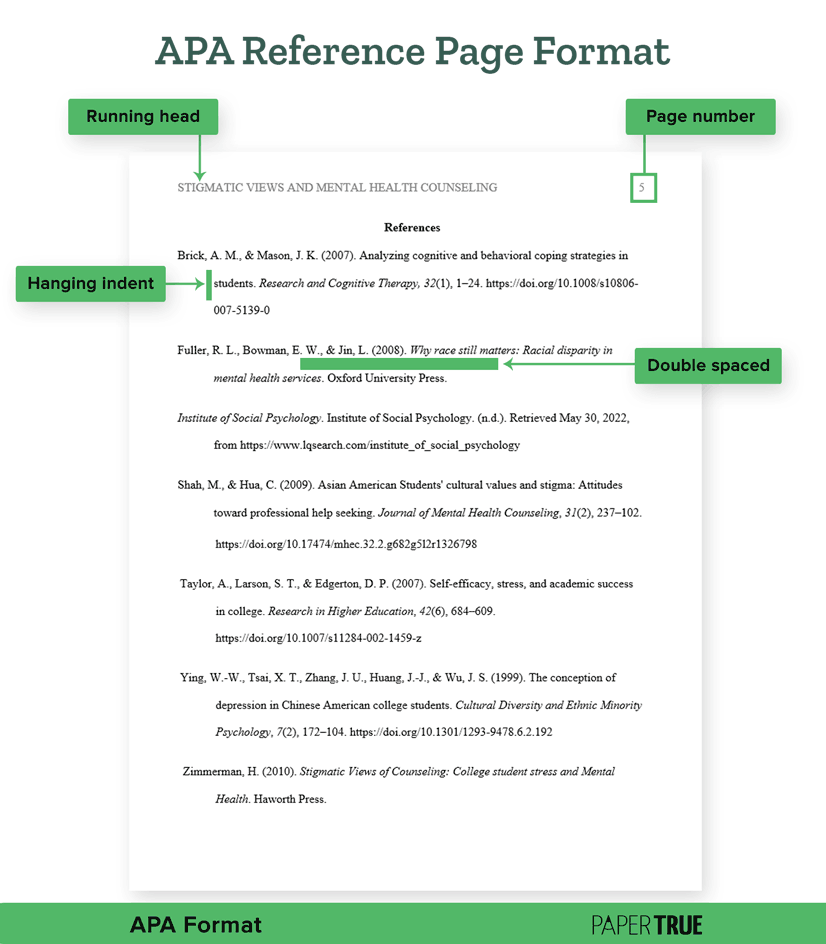Still have questions? Leave a comment

Checklist: Dissertation Proposal
Enter your email id to get the downloadable right in your inbox!

Examples: Edited Papers
Enter your email id to get the downloadable right in your inbox!
Need
Editing and
Proofreading Services?

Formatting an APA Reference Page | Template & Examples
 Sep 13, 2023
Sep 13, 2023 4
min read
4
min read
- Tags: APA, APA Style, Formatting Guidelines
You have finally checked, rechecked, edited, and thoroughly proofread your document. But the arduous task of creating your APA reference page still remains! If you need help formatting your reference page and understanding how different APA works are cited, this article is for you!
You may question if the correct terminology to be used is “APA references” or “APA works cited”. We will answer this question and many more in this quick guide. We will also take a look at the APA reference page formatting guidelines with the help of examples as well as templates.
APA reference page formatting guidelines
Every APA in-text citation included in your paper must be mentioned at the end, on a separate reference page. A reference page citation is simply a full citation of the source mentioned in your document. Let’s take a look at how these citations are formatted.
Here’s the general formatting of a reference page in the APA style:
- Add an APA running head to the page.
- Double-space the entire text.
- Place and bold the heading “References” at the top of your page.
- Organize your citations in alphabetical order*.
- Barring the first line, leave a hanging indent of 0.5 inches for every line in a paragraph.
*Do not consider articles such as “a”, “an”, or “the” while alphabetizing your citations.
Let’s understand the individual aspects of an APA-style reference page and learn how to format them.
1. Author name
Start your reference page for your APA-style paper with the author’s name. Here are a few formatting guidelines on how you should know while including the name of the author:
- Begin your citation with the name of the relevant author.
- Include the last name followed by the first name initial of the author. End the name of the author with a period.
- If the name of the author is not known, simply replace it with the title of your source.
- If two or more authors are present separate the name of each author with a comma followed by an ampersand.
- In case the two authors have the same last name and first name initials, include the first name of each author in brackets.
- In case of three or more contributing authors, include the first author’s name followed by “et al.”
- If you want to include a study conducted by an organization, simply include the name of the concerned organization.
2. Date of publication
- Include the date of publication in parenthesis after citing the names of the author/s involved (or in some cases, the title of the source.)
- Follow the year, month, and day format. If the month and day are not available, you can simply include the year.
- If the publication date is not mentioned, simply include “n.d”., which refers to no date, in the parenthesis.
3. Title of publication
- If you are referring to a specific chapter in a book or journal, include it before the title of your source. Use the sentence case* and end with a period.
- When it comes to names of books, apply the sentence case* and italicize the title.
- For names of newspapers, magazines, and journals use the title case** and italicize the title.
- For journals and periodicals, include the volume, issue, and page number*** followed by a period after the title.
- In cases where the name of the author is known, place the title of the chapter and the source before the date of publication.
- When it comes to sources like lecture notes or audio podcasts, you can include a brief description of your source directly after the title. Capitalize only the first letter of the source.
* In the sentence case, only the first letter in sentences and proper nouns is capitalized.
** In the title case, the first letter of the first word and the starting letter of all words except for articles and prepositions are capitalized.
*** The volume is followed by the issue number in parentheses with the page number at the end. All the numbers are italicized.
Links to online and offline resources
You may have derived information from a variety of online and offline publications. Include the sources for these pieces of information after the title of the publication.
Let us first take a look at how to format physical sources:
- Include the title of the book, journal, newspaper, or magazine you’ve derived information from.
- Do not use the publisher’s name while citing journals, newspapers, or magazines.
- Include an abbreviated version of the name of the publisher when it comes to books.
- Exclude details such as the publisher’s name and information in books. However, include terms that are a part of the publisher’s name such as “press” or “book”.
Now, let us understand how to format online sources:
- Make sure to link the URL of the relevant book, publication, newspaper, or journal without a period.
- If your citation has a DOI number*, use that instead of the URL as it is static.
*DOI or Direct Object Identifier is a permanent electronic link to a journal.
Here’s a complete APA citation example:
Last name of author 1 & Last name of author 2. (Year of publication). Book chapter. Title of Book. Publisher. Link to URL
To better understand how these citations are formatted, let’s look at a finished APA 7 reference page.
APA reference page example
Different APA sources use different formats for citations. To better understand these sources, we’ve compiled a list of various types of sources present in an APA format reference page. The following reference page example is based on the use and relevance of vestigial organs in humans.

APA reference page template
To help you create your reference page for APA format, we’ve included a template to make things easier for you. This template is available in Google Docs and provides an overview of citation styles for different sources.
Now that your paper is completed and formatted to the T, it’s ready to be submitted. All the best!
As providers of professional academic editing services, it’s our duty to provide you with useful resources to aid you in writing. Take a look:






